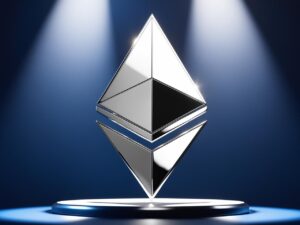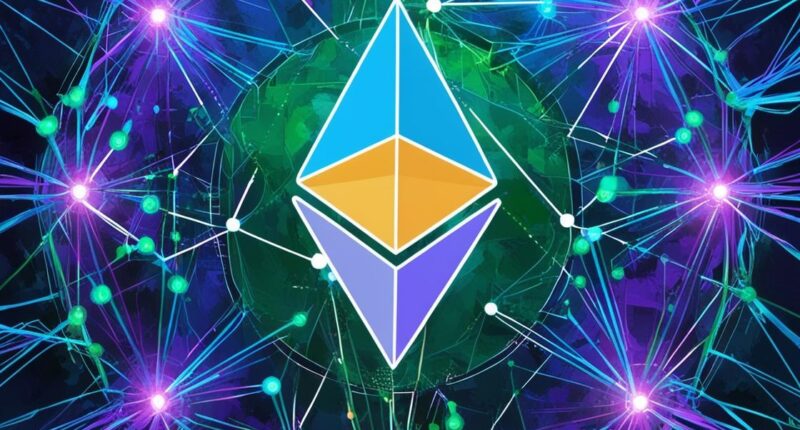To mine Ethereum, select efficient hardware like GPUs, such as NVIDIA GeForce GTX 1070 or AMD Radeon RX 580. Install compatible mining software, including Ethminer or Claymore, and configure it with pool information. Create a secure wallet for storing funds, choosing between options like MetaMask or hardware wallets. Join a mining pool to enhance profitability, and monitor performance through safe overclocking and cooling. Users will find detailed steps for each aspect in the following sections.

Mining Ethereum involves several key steps that require careful evaluation and planning. The first step is choosing the right mining hardware. Graphics Processing Units (GPUs) are generally more efficient than Central Processing Units (CPUs) for Ethereum mining. Popular choices include the NVIDIA GeForce GTX 1070 and the AMD Radeon RX 580. While ASIC miners are available, they are less flexible than GPUs. It is vital to examine factors such as hash rate, power consumption, and cost. Additionally, a minimum of 4GB GPU memory is required for effective Ethereum mining. Proof-of-work mining was the only mode of issuance prior to Ethereum’s transition to Proof-of-Stake. Mining is essential for verifying transactions and maintaining network security in cryptocurrency systems.
Once the hardware is selected, the next step is to set up mining software. Options like Ethminer, Claymore, and PhoenixMiner are compatible with various operating systems including Windows, Linux, and macOS. Configuring the mining software with pool information is important, as is setting up overclocking software for GPU optimization and installing temperature monitoring software to guarantee safe operation.
The next crucial step is setting up mining software, ensuring compatibility and optimizing GPU performance for effective mining.
Creating an Ethereum wallet is the third step. There are several options available, such as MetaMask, MyEtherWallet, and hardware wallets. It is important to secure private keys and back up the recovery phrase. Miners should choose between hot wallets and cold storage, confirming that their wallet is compatible with mining pool payouts and evaluating any gas fees for withdrawals.
Joining a mining pool can enhance profitability. Popular pools include Ethermine, Nanopool, and F2Pool. Miners should compare pool fees, minimum payouts, and server locations before setting up their worker name and password. Monitoring pool statistics and earnings is advisable.
To optimize mining performance, miners can safely overclock GPUs to increase hash rate, adjust power limits to balance efficiency, and guarantee proper cooling and ventilation. Regular updates of drivers and mining software are also necessary.
Lastly, miners should stay informed about Ethereum updates, particularly the shift to Proof-of-Stake and the impact of EIP-1559 on mining rewards. Keeping track of discussions surrounding Ethereum Improvement Proposals (EIPs) will help miners prepare for potential changes.
Frequently Asked Questions
What Is the Current Price of Ethereum?
As of March 19, 2025, the current price of Ethereum is $2,029.
This represents a 7.24% increase over the past 24 hours, although it has decreased by 27.78% in the last 30 days.
The price is currently trading above the 50-day moving average, indicating short-term bullish sentiment, but remains below the 200-day moving average, suggesting a bearish long-term trend.
Analysts predict potential price movements based on resistance and support levels.
How Long Does It Take to Mine One Ethereum?
The time required to mine one Ethereum (ETH) varies considerably based on several factors.
For solo miners using average hardware, it may take years. In contrast, those in mining pools with high-end GPU rigs might mine 1 ETH in approximately 3 to 4 months.
Using specialized ASIC miners, like the Antminer E9 Pro, can reduce this time to around 45 days.
Additionally, increasing network difficulty complicates precise time predictions.
Can I Mine Ethereum on a Laptop?
Mining Ethereum on a laptop is possible, but it presents several challenges.
Laptops typically have lower hash rates, which means reduced mining rewards. They also risk overheating due to limited cooling systems, potentially damaging the hardware over time.
Additionally, laptops consume less power than desktops, but high electricity costs can diminish profits.
For most, dedicated mining rigs or cloud mining are more efficient options for generating Ethereum effectively.
Is Ethereum Mining Profitable in 2023?
In 2023, Ethereum mining has become less profitable due to its shift to Proof-of-Stake, which greatly reduced mining rewards.
Average daily revenue per 100 MH/s ranges from $0.50 to $1.00, with breakeven periods estimated at 12-18 months.
Increased competition and market volatility further diminish profit margins.
As a result, miners may consider alternative cryptocurrencies or mining pools to enhance their chances of generating revenue in the evolving landscape of digital currency mining.
What Are the Environmental Impacts of Ethereum Mining?
The environmental impacts of Ethereum mining have been considerable.
Before the changeover to proof-of-stake, Ethereum consumed 112 TWh of electricity annually, comparable to countries like the Netherlands. This usage resulted in 11 million tons of CO2 emissions each year. Additionally, mining produced substantial electronic waste due to obsolete hardware.
However, after the Merge, energy consumption dropped over 99.9%, reducing emissions to 870 tonnes per year and minimizing e-waste production considerably.
References
- https://ethereum.org/en/developers/docs/consensus-mechanisms/pow/mining/
- https://fastercapital.com/topics/hardware-requirements-for-ether-mining.html
- https://www.youtube.com/watch?v=OOjo2VQowRw
- https://www.youtube.com/watch?v=Tm3GDrXDt7o
- https://zenledger.io/blog/how-to-mine-ethereum/
- https://supra.com/academy/how-to-build-an-ethereum-mining-rig/
- https://wundertrading.com/journal/en/learn/article/a-beginners-guide-to-crypto-mining
- https://www.simplilearn.com/tutorials/blockchain-tutorial/ethereum-mining
- https://coinrivet.com/guides/altcoins/beginners-guide-on-how-to-mine-ethereum/
- https://cointelegraph.com/learn/articles/how-to-mine-ethereum









